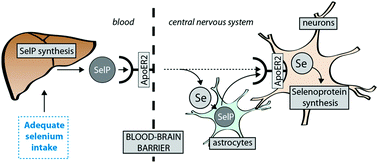Selenium, selenoproteins and neurodegenerative diseases
Abstract
It is unsurprising that our understanding of the role of selenium in neurological function is somewhat immature, considering its relatively recent discovery as an essential element to human health. Selenocysteine, the 21st amino acid, is the defining feature of the 25 selenoprotein-encoding genes so far discovered within the human genome. The low abundance of these proteins in the brain belies the integral role they play in normal neurological function, from well-characterised antioxidant activity in the periphery to poorly understood mechanisms that modulate mitochondrial function and response to brain pathology. Selenium has been identified as playing a role in several neurodegenerative disorders, including Alzheimer's and Parkinson's disease, though its function as a ‘cause or effect’ of disease process remains unclear. This review discusses selenium metabolism in detail, specifically with regard to the role it plays within the central nervous system, and examines the most current literature investigating how selenium may be involved in chronic diseases of the central nervous system.

- This article is part of the themed collection: Alzheimer's Research Month 2016


 Please wait while we load your content...
Please wait while we load your content...